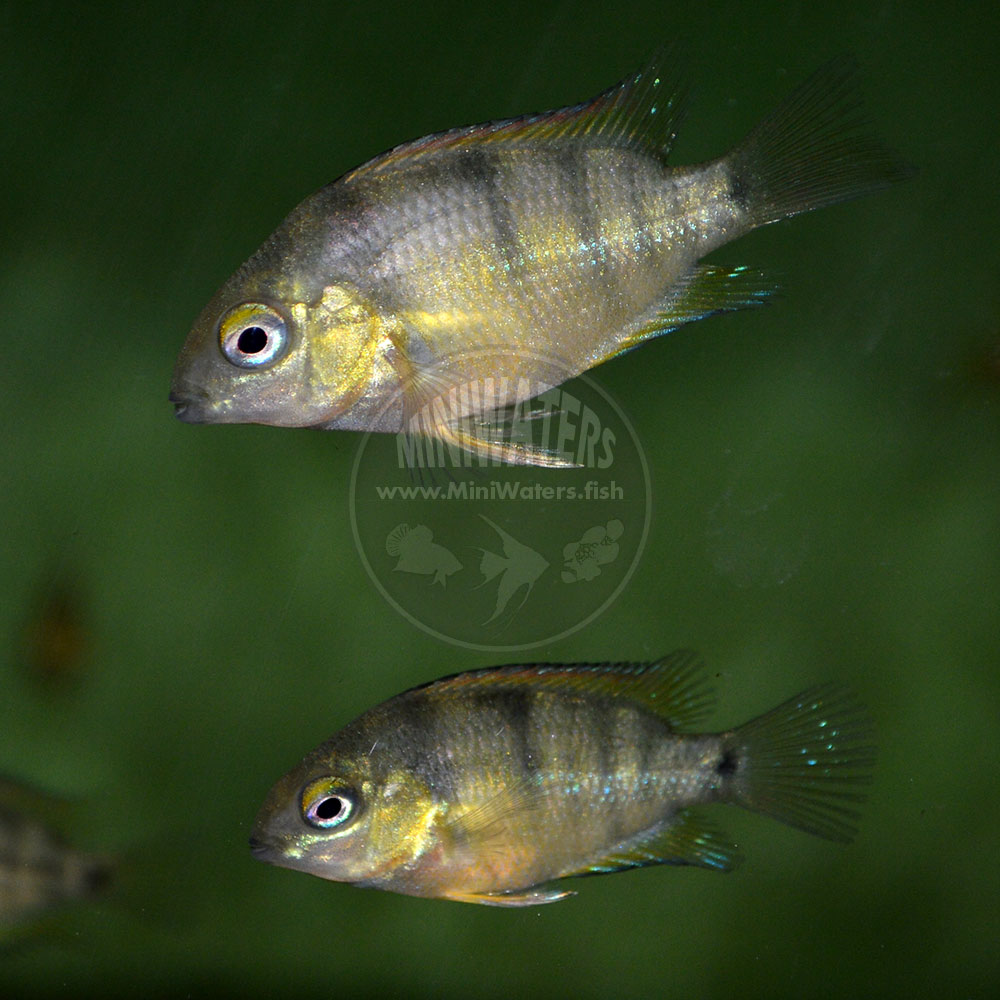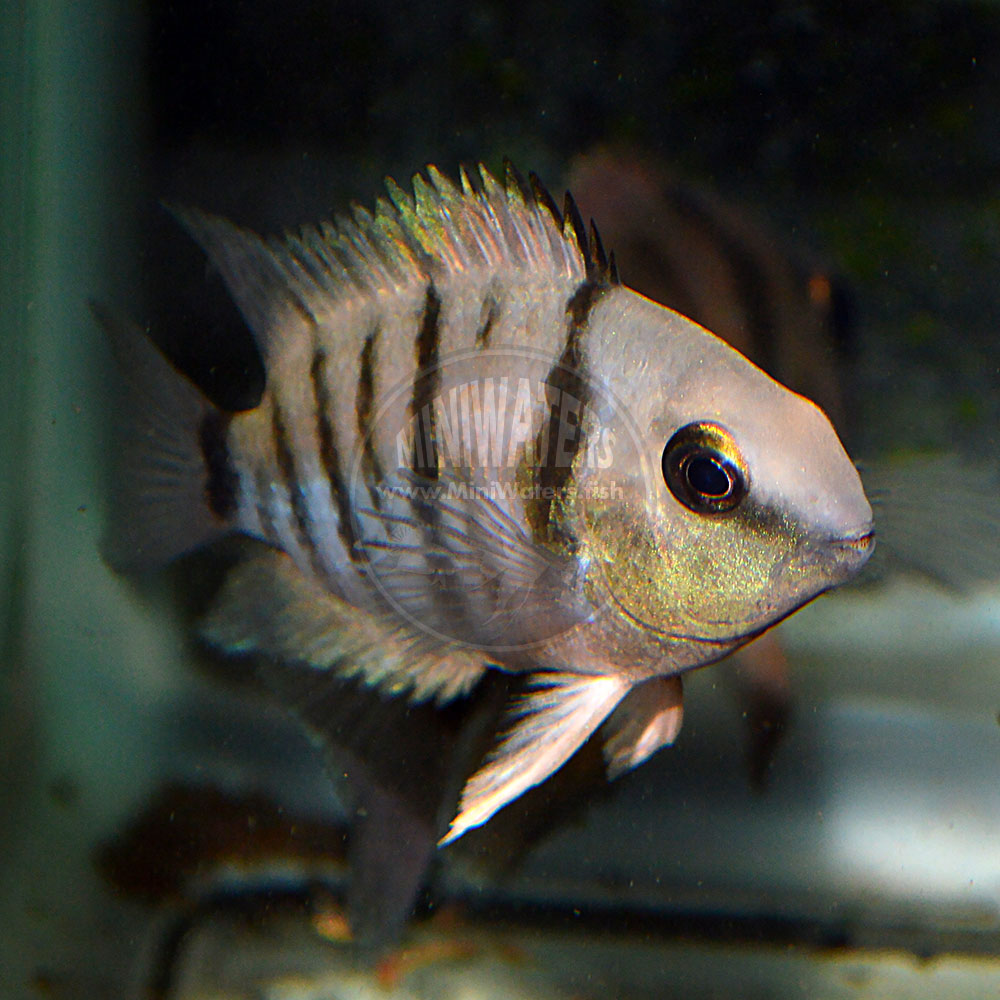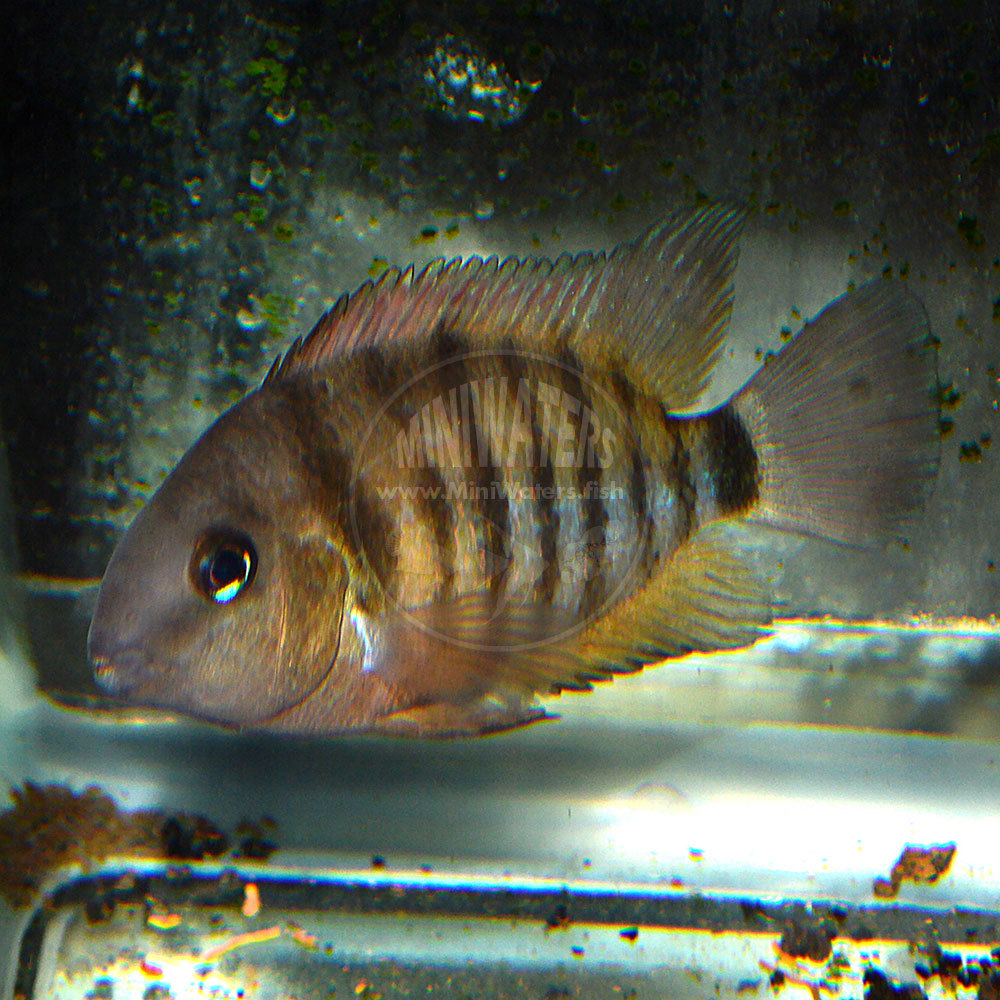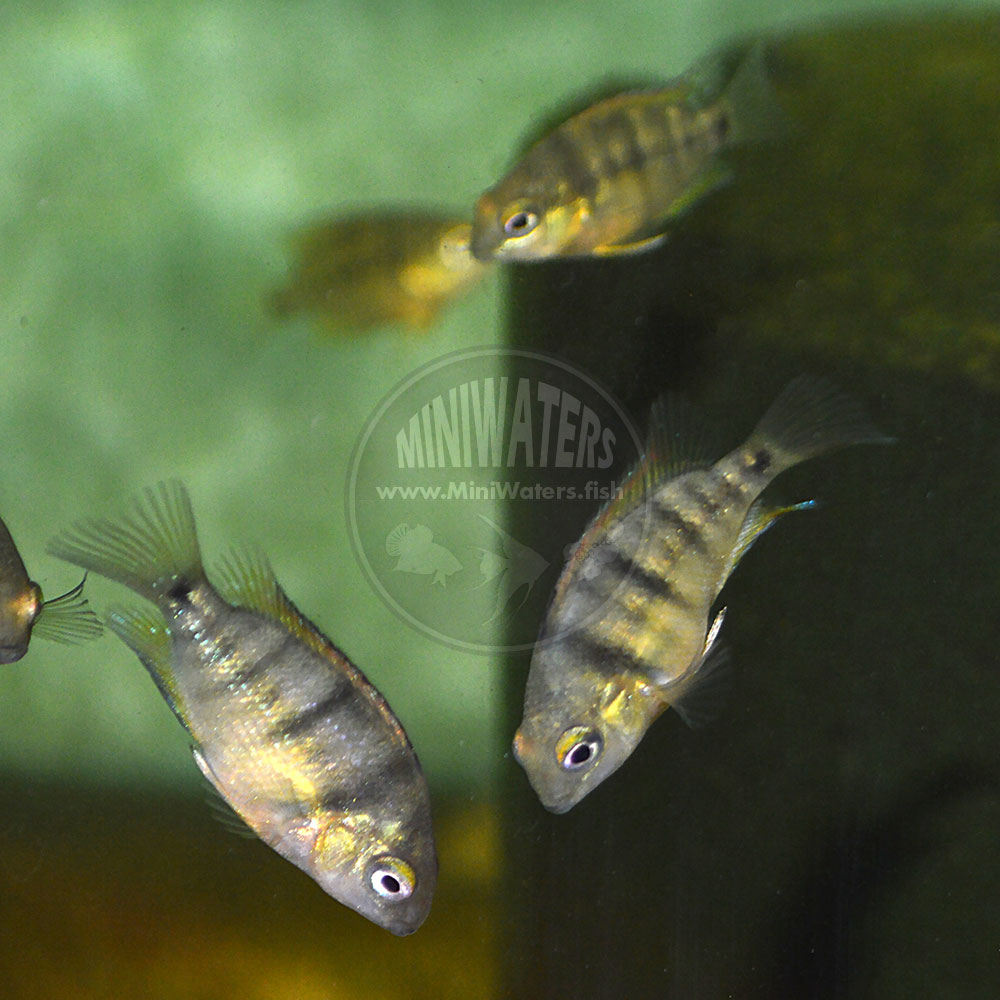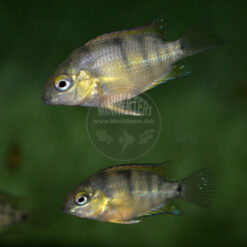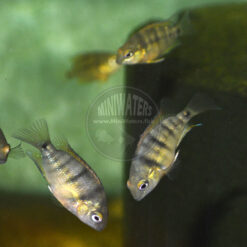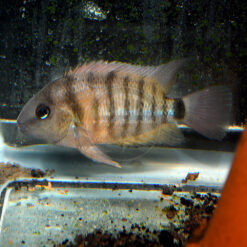Cryptoheros cutteri “Blue Eye Cichlid”
Price range: $9.00 through $19.00
Cryptoheros cutteri is a beautiful Central American cichlid native to Honduras and Guatemala; other references suggest it might also be found in Belize and/or El Salvador. It may be confused with the “other” Blue-eye Cichlid, Cryptoheros spilurus, but is a bit more colorful. Vaguely similar to a “Convict” Cichlid, there is a subtle suffusion of colors in shades of blue and gold when at rest, transitioning to a high contrast white and black pattern during breeding periods. Easy care, but aggressive, so choose tankmates accordingly. Currently, we are offering excess adults (we suspect most or all are males) from our original population, and small offspring, 3/4″ up to about 1.25″. Mediums will be in the 1.5-2″ range. More info below:


